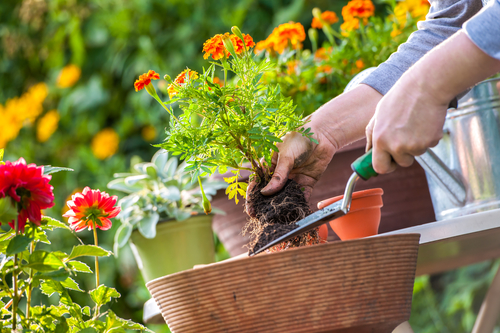Learn How To Create The Perfect Xeriscape
When people say xeriscape they are referring to the practice of designing landscapes using slow-growing, drought-tolerant plants that aim to promote water conservation and reduce the need for regular maintenance.
Although recent drought conditions have created an urgency to adjust to different landscape practices like xeriscaping, many people still opt for xeriscape designs because they look amazing when finally complete.
Having said that, it’s important to remember that designing a xeriscape is not just throwing certain plants into some dirt and expecting them to look spectacular, it’s a process.
So, to help people to get a better grasp of things, we’d like to share some fundamental aspects on the best way to create the perfect xeriscape!
Accurate Designing Will Determine the Final Look

Now, to be as straightforward as possible, it’s important that people know that having plant material in the right place, is one of the most important aspects of xeriscaping.
Whether it be that you’re giving a facelift to an old landscape or designing a new one altogether, a proper design is vital – especially if you intend to conserve resources and achieve an amazing result.
Tips That Help With Xeriscape Design
- Assess the area for the presence of vegetation as this is an indication of whether plant material will grow well in that particular area.
- Arrange your xeriscape into of three different zones; a high water-use zone, a moderate water-use zone, and a low water-use zone. The high water-use zone should be very small, highly visible and watered as needed.The moderate water-use zone is usually a bit larger than the high water-use zone and is only watered when required. Now, the low water-use zone should be at least 60% of the area and only include plant types that are initially watered.
Using these straightforward tips you will be well on your way to creating a xeriscape design that’s efficient, practical, and easily maintained.
Soil Management And Soil Quality Is Important
Managing soil may probably be the part of xeriscaping that gardeners enjoy the least as it can involve a bit of hard work on their part but despite this, working with good, quality, soil while designing your xeriscape, is extremely important.
By knowing your soil’s strengths and weaknesses, you’ll know exactly what kind of amendments may be needed for healthy growth.
Nevertheless, always make sure to slope garden beds away from any buildings and plant drought-tolerant plants at the higher part of the slope.
Choosing The Right Plants
The best way to choose plants for your xeriscape would be to opt for more native plant species that may find it easier to adapt to your local environment.
It may be also smart to choose plants that have a slower growth rate that will mature with the rest of your landscape, add texture, and complement the surrounding area.
Here are a few plant choices you can use to make your xeriscape beautiful, functional and low maintenance:
- Southern Indian Azalea,
- Climbing Fig
- Creeping Juniper
- Sweet Alyssum
- Camellia
- Creeping Gardenia
- Jasmine
- Cleyera
- Indian Hawthorne
Why not let the professionals help you get started with creating the perfect xeriscape. Here at DK Landscaping, you can get the best xeriscaping services in California – Our professional team can come in and take care of all the hard work for you and all you have to do is sit back and watch you xeriscape mature and bloom.
Give us a call at (707) 280-3632 and our professional team will drop by to start the planning and preparation process. To learn more about our xeriscaping services you can also visit our website at dklandscaping.com.
Tagged: Landscape Maintenance, landscaping, Sonoma County, xeriscape
You can leave a response, or trackback from your own site. Back to Top
Leave a Reply





